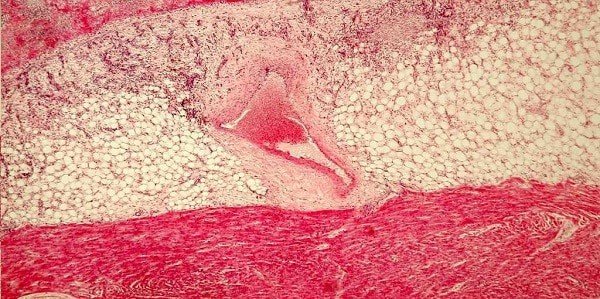Pericarditis

Description
Pericarditis is swelling and inflammation of the pericardium – the outer thin serous, membrane-like covering of the heart.
The disease causes the appearance of painful sensations in the chest, sometimes other symptoms. They appear due to the friction of the irritated layers of the pericardium.
The disease usually begins suddenly, but does not last long, its acute form is manifested. When the symptoms develop more smoothly or are constant, it is considered chronic.
Most cases are mild and usually get better on their own. The most severe cases are treated with drug therapy and very rarely with surgery.
Early diagnosis and timely treatment help reduce the risk of developing long-term complications of the disease.
What are the symptoms?
The acute form of the clinical condition usually lasts no more than a few weeks and its most characteristic symptom is a sharp, stabbing pain in the chest behind the sternum or left side of the chest.
However, some sufferers describe the pain as a dull, aching pressure that varies in intensity.
The painful sensation may start initially in the left shoulder or neck and worsen when lying down, coughing or taking a deep breath.
Sometimes it is difficult to distinguish between pericardial pain and that felt when a heart attack occurs.
The chronic form of the disease is usually associated with chronic inflammation and can cause fluid to collect around the heart /pericardial effusion/.
The most characteristic clinical manifestation is also chest pain.
Other possible manifestations of the disease are:
• Shortness of breath when the affected person is lying down;
• Palpitations;
• Subfebrile temperature;
• Generalized feeling of weakness, fatigue or nausea ;
• Cough;
• Swelling of the abdomen or legs;
When should you seek medical attention?
If you experience chest pains that you have never experienced before, seek medical attention immediately.
Many of the clinical manifestations of pericardial inflammation are similar to those of other heart and lung diseases.
And that is why the sooner you are examined and examined, the sooner you will be given a correct diagnosis and, if necessary, begin adequate treatment.
For example, although the cause of a stabbing pain in the chest may be pericarditis, it is very likely that it was initially due to a heart attack or a blood clot in the lungs /pulmonary embolism/.
Treatment of pericarditis
When the case is mild, the patient recovers on its own, without the need for treatment. And in more severe cases, drug treatment is usually applied.
Medications
To reduce inflammation and swelling, pain relievers such as aspirin or ibuprofen are prescribed, which patients respond to very well. Symptoms should begin to subside after a day or so. And for most affected, taking these medications is the only treatment needed.
If patients don’t feel better after a day or so, doctors prescribe strong prescription pain relievers like colchicine.
This drug is used to limit inflammatory processes in the body and can be prescribed for the acute form of the disease as well as for recurring symptoms.
However, the drug is not safe for people with certain pre-existing health problems such as liver or kidney disease.
The attending physician checks the patient’s medical history in advance before prescribing colchicine.
If patients do not respond to pain relievers and colchicine or the symptoms of the disease recur, doctors prescribe corticosteroids such as prednisone.



